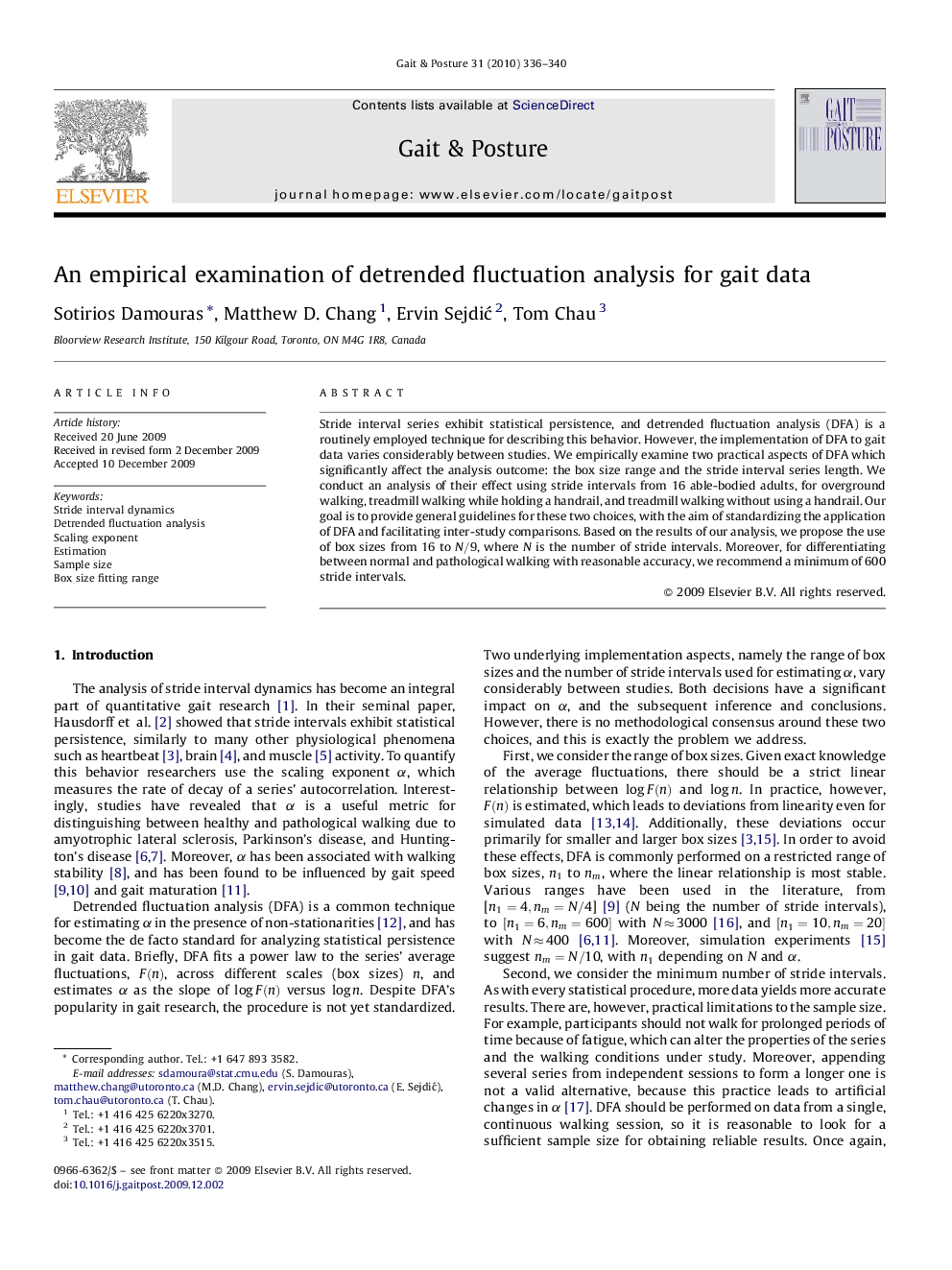| Article ID | Journal | Published Year | Pages | File Type |
|---|---|---|---|---|
| 4056793 | Gait & Posture | 2010 | 5 Pages |
Stride interval series exhibit statistical persistence, and detrended fluctuation analysis (DFA) is a routinely employed technique for describing this behavior. However, the implementation of DFA to gait data varies considerably between studies. We empirically examine two practical aspects of DFA which significantly affect the analysis outcome: the box size range and the stride interval series length. We conduct an analysis of their effect using stride intervals from 16 able-bodied adults, for overground walking, treadmill walking while holding a handrail, and treadmill walking without using a handrail. Our goal is to provide general guidelines for these two choices, with the aim of standardizing the application of DFA and facilitating inter-study comparisons. Based on the results of our analysis, we propose the use of box sizes from 1616 to N/9N/9, where N is the number of stride intervals. Moreover, for differentiating between normal and pathological walking with reasonable accuracy, we recommend a minimum of 600600 stride intervals.
